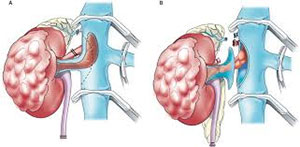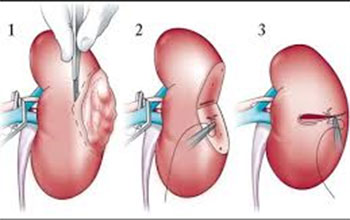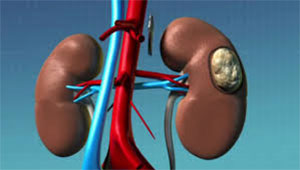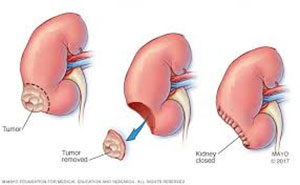Laparoscopic Nephrectomy furnishes patients with a protected and viable approach to evacuate an ailing or carcinogenic kidney. Laparosopic Nephrectomy is a negligibly obtrusive procedure, which furnishes patients with less distress and proportional results when contrasted with the bigger cut needed with customary open surgery. At the point when contrasted with ordinary open surgery, laparoscopic Nephrectomy has brought about altogether less post-agent torment, a shorter clinic stay, prior come back to work and every day exercises, a more great nonessential result and results indistinguishable to that of open surgery.


Laparoscopic radical Nephrectomy utilizes an insignificantly intrusive methodology (laparoscopy) to perform precisely the same system that is done in open radical Nephrectomy. In any radical Nephrectomy the whole kidney including the kidney malignancy is uprooted. The operation includes evacuation of the kidney alongside the fat around the kidney. The majority of this tissue is contained in a weathered layer known as Gerota's belt. On the off chance that the kidney tumor is substantial
The laparoscopic way to deal with fractional Nephrectomy implies that no expansive entry points are obliged to perform the strategy. Rather than an expansive cut, three or four 1/2 cm to 1 cm cuts is made. The spaces in the body are tenderly loaded with gas to make working space and a little camera is put into the body through one of the entry points. The other little entry points are utilized to place working instruments which can be utilized to perform the strategy.

The whole kidney with the tumor inside and with the encompassing fat and the layer known as Gerota's sash are uprooted. Once the whole example has been isolated from the encompassing tissues, it is set in a sack while still inside the body. The pack is then evacuated by making an entry point.
Here are some of the signs of this ailment:
Treatment of most kidney diseases starts with evacuation of the essential tumor in an operation called a Nephrectomy. The reason for surgery is to uproot the essential tumor and included tissue in the kidney. Regardless of the possibility that malignancy has officially spread, a Nephrectomy may at present be useful in light of the fact that your body then has less growth to battle through

medications that your specialists may prescribe after surgery. Actually, a late investigation of 245 patients with operable metastatic kidney growth exhibited that patient who had a Nephrectomy before systemic treatment with interferon alfa had a higher survival rate than patients treated with interferon alfa alone
A Nephrectomy is an all around characterized and basic operation. A large number of Nephrectomies are performed consistently for kidney tumor and in addition for different infections. Despite the fact that it is a noteworthy surgery, the potential dangers are all around characterized and it is typically truly safe on the off chance that you don't have any hidden sicknesses, for example, coronary illness or liver malady. Death rates are ordinarily under 1% for patients whose malignancy has not metastasized and around 1% for patients with metastatic illness. Entanglements are not regular unless the tumor is generally best in class, for example, when the tumor stretches out into the renal vein or mediocre vena cava (the vast vein through which blood from your legs and inward organs comes back to the heart), or the tumor has spread past the kidney. Augmentation of the tumor into the vein obliges vein surgery to uproot the influenced segment of the vein. This issue is surely knew, however it draws out the operation, and blood transfusions are frequently required. Blood transfusions may not be needed for littler, limited tumors.